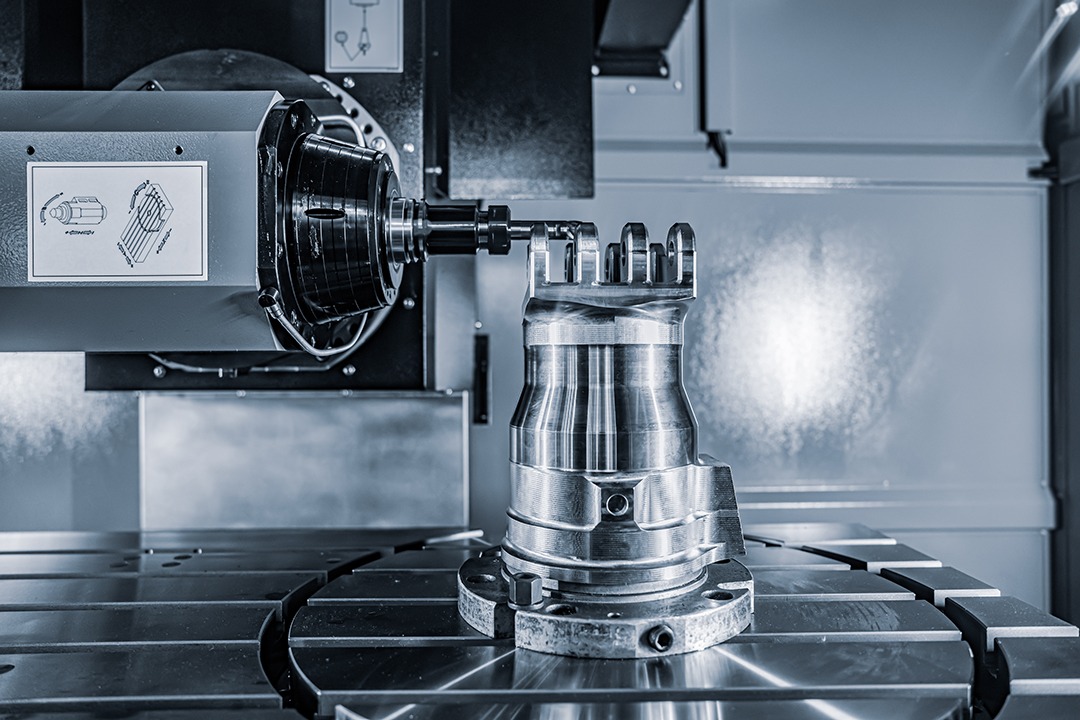Repmold: Future of Precision Manufacturing
Introduction to Repmold
Definition of Repmold and What Makes It Unique
Repmold refers to a modern manufacturing technique focused on creating exact replicas of a master mold or model. Unlike traditional molding processes that require expensive tooling and long setup times, Repmold streamlines the workflow by capturing the original shape and reproducing it with precision. This method combines advanced materials, automation, and digital design tools to achieve near-perfect consistency across every copy.
Importance of Replication and Precision in Modern Manufacturing
In today’s manufacturing landscape, accuracy and speed are everything. Companies face pressure to shorten production cycles, lower costs, and meet eco-friendly standards without sacrificing quality. Repmold addresses all three challenges by simplifying mold creation and reducing dependency on lengthy machining processes.
The Origin and Evolution of Repmold
Early Molding Techniques in Ancient Civilizations
The roots of molding stretch back thousands of years. Ancient Egyptians, Greeks, and Chinese artisans used clay and bronze molds to replicate sculptures, tools, and jewelry. These early molds demonstrated the core principle of replication — creating many identical objects from a single form. Though simple, these methods laid the foundation for today’s complex mold-making technologies.
Industrial Revolution and the Rise of Metal Molds
During the 18th and 19th centuries, the Industrial Revolution transformed manufacturing. Steam-powered machines and metallurgy innovations gave rise to durable metal molds, allowing mass production of parts for engines, tools, and machinery. Factories could now create thousands of identical components efficiently — marking the first major step toward modern mold replication.
How “Repmold” Emerged as a Term Symbolizing Repeatable Precision
The term Repmold symbolizes the next phase of manufacturing evolution — repeatable, scalable precision molding. It emerged alongside advancements in computer-aided design (CAD), automation, and 3D scanning, representing the fusion of digital technology with traditional mold-making. The goal shifted from simple duplication to intelligent replication, where every mold could be reproduced with exact accuracy and minimal variation.
How Repmold Works
Basic Process of Mold Design and Reproduction
The Repmold process begins with a master model — a highly accurate original part designed digitally or created using CNC or 3D printing. This master serves as the template for mold replication. Using specialized casting or replication materials, the system captures the exact surface and geometry of the master, forming a precise negative mold ready for reproduction.
Steps: Design, Prototype, Testing, and Final Molding
- Design Phase: Engineers design the part using CAD software, ensuring every dimension meets functional requirements.
- Prototype Creation: The master model is built using 3D printing or machining.
- Mold Replication: The master is coated or cast with replication material to form a negative mold.
- Testing and Calibration: The first batch is tested for dimensional accuracy and surface finish.
- Final Molding: Once verified, the Repmold system can reproduce multiple identical parts efficiently.
Role of Software and CAD Tools in Achieving Accuracy
Software plays a critical role in Repmold’s precision. CAD programs enable engineers to simulate molding behavior, identify weak spots, and optimize flow dynamics before physical production. Integration with Computer-Aided Manufacturing (CAM) and 3D scanning ensures that every detail of the master model is faithfully replicated. Digital inspection tools further verify that every copy aligns perfectly with original design tolerances.
How Repmold Ensures Identical Output for Mass Production
Repmold relies on automation, controlled pressure, and real-time monitoring to maintain uniformity. Once the master mold is digitally defined, every subsequent replica is produced under the same parameters — temperature, pressure, curing time, and material ratios. This precision-driven control ensures consistent results, even across thousands of units, making Repmold ideal for industries demanding reliability and repeatability.
Materials Used in Repmold Production
Common Materials: Steel, Aluminum, and Copper Alloys
The choice of material defines a Repmold’s durability and performance. Steel molds, known for their hardness and longevity, are common in high-precision applications. Aluminum molds offer a lightweight, cost-effective alternative for shorter runs. Copper alloys are prized for their excellent thermal conductivity, which helps regulate temperature during production and ensures smooth, defect-free surfaces.
Specialized Coatings for Durability and Temperature Resistance
To enhance lifespan, molds are often treated with advanced coatings such as titanium nitride or ceramic-based finishes. These coatings prevent corrosion, reduce friction, and withstand high-temperature environments. In some cases, hybrid materials — combining metal and polymer — are used to balance cost and performance.
How Material Selection Affects Cost, Performance, and Longevity
Each material brings trade-offs. Steel is durable but expensive and time-consuming to machine. Aluminum is easier to work with but less resistant to wear. The right choice depends on production volume, precision requirements, and part complexity. A well-selected material ensures longer mold life, lower maintenance costs, and more consistent output quality.
Environmental Aspects of Material Sourcing
Sustainability plays a growing role in material selection. Manufacturers are increasingly turning to recycled metals and eco-friendly composites to reduce environmental impact. Efficient material use — a hallmark of the Repmold process — also cuts waste, contributing to greener manufacturing practices.
Industrial Applications of Repmold
Automotive Manufacturing
The automotive industry uses Repmold for prototyping and small-batch production of parts like engine housings, dashboards, and interior trims. It allows engineers to test designs rapidly and bring innovations to market faster without waiting months for traditional tooling.
Electronics
In electronics, Repmold enables precise replication of components such as circuit boards, casings, and connectors. The method supports the production of lightweight, high-tolerance parts essential for modern devices and sensors.
Consumer Goods
Companies producing toys, packaging, or household products use Repmold to create detailed prototypes and limited-run batches. It enables fast market testing and customization, aligning with modern consumer trends that favor variety and personalization.
Aerospace and Defense
For aerospace and defense applications, Repmold ensures dimensional consistency in critical components. It supports the production of lightweight, high-strength parts for aircraft interiors, drones, and precision instruments — areas where safety and accuracy are non-negotiable.
Benefits of Using Repmold
Accuracy and Consistency in Production
Repmold achieves exceptional dimensional accuracy by capturing every detail of the master model. This ensures uniformity across all parts, reducing defects and rework.
Faster Turnaround and Scalability
Traditional molds can take weeks or months to produce. Repmold drastically shortens this timeline, allowing companies to prototype, test, and adjust in a matter of days. This flexibility accelerates innovation and product launch cycles.
Cost-Effectiveness for Large-Scale Manufacturing
Because it reduces tooling time and material waste, Repmold cuts production costs significantly. It’s ideal for small and mid-sized runs, making high-quality production accessible even to startups and smaller manufacturers.
Enhanced Product Quality and Uniformity
Each replicated mold maintains the same structural integrity and surface finish as the original, ensuring premium product quality and consistency. This reliability builds customer trust and brand value.
Reduced Waste and Improved Material Efficiency
Repmold minimizes excess resin, scrap metal, and energy use. By optimizing every replication cycle, manufacturers can lower their environmental footprint and align with global sustainability standards.
Technological Advancements in Repmold
Role of AI and Machine Learning in Mold Optimization
Artificial intelligence (AI) and machine learning (ML) have revolutionized how Repmold systems operate. These technologies analyze vast data sets from production cycles to identify subtle inefficiencies and predict mold performance. AI algorithms adjust variables like temperature, pressure, and cooling rates in real time to achieve consistent outcomes.
3D Printing and Rapid Prototyping for Mold Design
3D printing has become a cornerstone of modern Repmold development. Instead of waiting weeks for machined prototypes, engineers can now print mold masters in hours using advanced polymers or metal powders. This rapid prototyping capability accelerates design validation and shortens time to market.
Additive manufacturing also allows complex geometries and internal cooling channels that traditional machining cannot produce.
Smart Sensors and IoT Integration for Predictive Maintenance
The Internet of Things (IoT) has introduced intelligent monitoring to the Repmold ecosystem. Embedded sensors track parameters such as pressure, temperature, and vibration during every production cycle. These real-time insights alert operators to wear, misalignment, or other potential failures before they cause downtime.
Challenges in Implementing Repmold Systems
High Initial Investment in Machinery and Training
One of the biggest barriers to adopting Repmold technology is the upfront cost. The machinery, software, and training required demand substantial investment. Smaller manufacturers often hesitate due to these expenses, even though the long-term savings and quality benefits justify the cost.
Additionally, operators must be skilled in CAD modeling, data analytics, and mold maintenance — requiring ongoing education and workforce training.
Material Wear and Mold Degradation Over Time
Despite advanced coatings and alloys, all molds eventually degrade. Constant exposure to heat, pressure, and friction leads to gradual wear. This degradation can alter surface finishes or cause microscopic cracks that compromise part integrity. To counter this, manufacturers employ high-strength materials, periodic refurbishing, and digital monitoring — all adding to operational costs.
Balancing Cost with Long-Term Efficiency
While Repmold improves productivity and accuracy, the initial expenses can strain budgets. The key challenge lies in balancing short-term costs with long-term efficiency. Companies must calculate ROI carefully, considering production volume, lifespan, and maintenance needs. Properly managed, Repmold becomes a cost-saving asset rather than an overhead burden.
Economic and Cultural Impact of Repmold
Contribution to Global Manufacturing Competitiveness
Repmold technology strengthens global manufacturing by improving quality, reducing errors, and enabling scalable production. It allows businesses in both developed and emerging markets to compete on precision and efficiency. This global adoption drives innovation, making Repmold a cornerstone of industrial advancement.
Job Creation and Skill Development in Mold Engineering
The growth of Repmold systems has led to increased demand for skilled professionals — from mold designers and CAD engineers to technicians and AI analysts. Training programs and technical institutes now include Repmold-based modules, creating opportunities for new careers. This technological field nurtures expertise in automation, materials science, and sustainable production.
How Repmold Drives Innovation and Industrial Growth
By merging traditional manufacturing with digital intelligence, Repmold encourages continuous innovation. Industries use it not just for production but also for research, testing, and design exploration. It fuels the creation of lightweight materials, optimized geometries, and eco-friendly products. Repmold is not only a tool — it’s a driver of modern industrial evolution.
The Future of Repmold
Trends Shaping the Next Generation of Molding Technology
Future Repmold systems will focus on higher efficiency, sustainability, and intelligence. We’ll see advanced AI-driven optimization, hybrid molds using biodegradable materials, and real-time adaptive manufacturing that adjusts on the fly to maintain perfection.
AI-Driven Automated Production Lines
Automation will expand further as AI algorithms take over repetitive tasks. Factories of the future will feature Repmold lines capable of self-calibration, defect correction, and performance analysis — requiring minimal human intervention while maintaining top-tier precision.
Expansion into Renewable Energy and Sustainable Industries
Repmold’s adaptability positions it perfectly for the green economy. It will play a major role in manufacturing parts for solar panels, electric vehicles, and wind turbines. Eco-friendly molds and materials will reduce energy consumption and enable the mass production of sustainable products.
Conclusion
Repmold stands as a symbol of modern precision, innovation, and sustainability. From ancient molding practices to digital-age automation, it has transformed how industries design and produce goods.
Its impact spans every sector — automotive, medical, electronics, and aerospace — offering unmatched accuracy, speed, and efficiency. While challenges like cost and maintenance persist, technological advancements such as AI, IoT, and digital twins continue to overcome these barriers.
In essence, Repmold is more than a manufacturing tool — it is the bridge to the future of industrial production. As Industry 5.0 unfolds, combining human creativity with intelligent automation, Repmold will lead the way toward a smarter, cleaner, and more sustainable manufacturing world.






